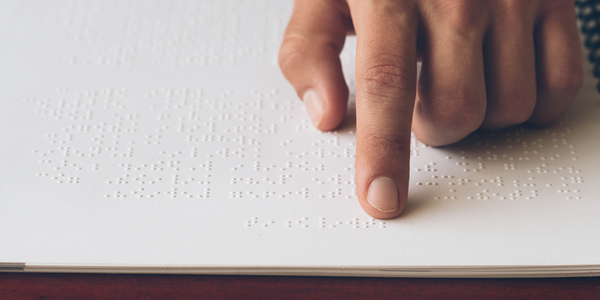
- Cities & Municipalities
- Business Operation
» 285 million people worldwide are visually impaired: 39 million are blind and 246 million have low vision.
» About 90 percent of the world’s visually impaired people live in developing countries.
» About 65 percent of visually impaired people are 50 and older; an estimated 19 million children worldwide are visually impaired.
» Today, blind and visually impaired people use a simple mobile phone for daily telephone communications. They also use an array of specialty devices, such as audio book-readers, color readers, navigation tools, raised Braille labels, special bar-code scanners, and large-buttoned Braille-raised MP3 players. Each device has a unique UI, and the lack of integration makes them difficult to use. Collectively, these devices are prohibitively expensive.
» Audio-books, magazines, and periodicals are an important form of entertainment for blind and visually impaired people. However, no timely, secure, affordable system exists today to provide these materials.
» The Central Library for the Blind, Visually Impaired and Handicapped initially invited 100 people who subscribe to the library’s collection of audio assets to join this project. After the trial period, any blind person who has a RAY device and subscribes to the library will be able to benefit from this new service.
» The RAY device integrates the advanced capabilities of an off-the-shelf Android smartphone enabled by a Qualcomm Snapdragon processor, a product of Qualcomm Technologies, Inc., and the capabilities of multiple specialty devices into a single, cost-effective solution with always-on, mobile broadband connectivity.
» Optimized for eye-free interaction, the UI allows the user to touch any position on the display, then turns that position into the center of an activity, such as audio-book reading. Navigation is enabled via a single finger movement in any direction. This platform is enhanced by the smartphone’s built-in vibration capabilities and voice prompts.
» A configuration wizard allows the UI to adapt its behavior to users’ preferences and usage patterns.
» The device supports telephony, messaging, navigation, object recognition, social network services, remote assistance, panic services, and leisure and entertainment services.
» A system is being built by which visually impaired people can use the RAY device to easily access, download and read audio assets from The Central Library for the Blind, Visually Impaired and Handicapped in Israel. Subscribers can download audio-books, magazines, newspapers and other materials immediately and directly to their RAY devices rather than wait for hard copies to arrive on a CD by mail. The system incorporates digital rights management protection for copyrighted material.

Case Study missing?
Start adding your own!
Register with your work email and create a new case study profile for your business.
Related Case Studies.

.png)










